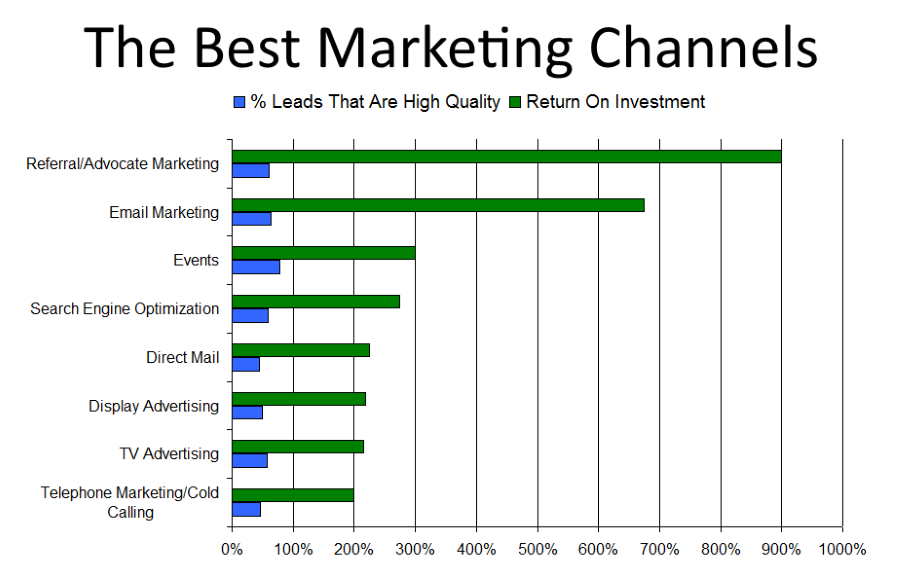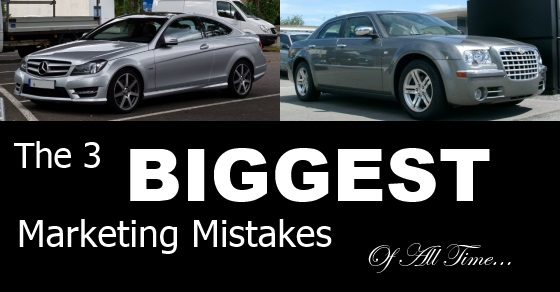What is Walmart's Secret to Success?
This article outlines the tactics and history of a company that has grown significantly since its inception. This is done to help business owners understand what it takes to grow a company significantly. We see Walmart as an interesting case study and examine their strategies, tactics, and success. Please note that Profitworks does not necessarily endorse the way Walmart has achieved success. For each tactic they use we also include our recommendation for if we agree our not with the ethics behind each tactic.
Contact Profitworks to book a time to discuss marketing for your family-owned and operated business.
Single Focus to Keep Prices Low
Walmart’s core purpose is summed up in its widely advertised mission statement and slogan: "We save people money so they can live better.” Sam Walton famously remarked upon receiving the Presidential Medal of Freedom award in 1992 that, “If we work together, we’ll lower the cost of living for everyone…we’ll give the world an opportunity to see what it’s like to save and have a better life.”
Throughout its 50+ years of history, Walmart has stayed true to its purpose and consistently striven to offer low everyday prices to its customers, and because of this, Walmart has built for itself a strong and loyal customer base. Customers walking into any Walmart store know that they can count on low prices.
In order to keep prices low for the customers, there are a number of things that Walmart did that helped them achieve that goal.
Conclusion: Profitworks agrees that having a single focus for your organization is a great idea. We think though that only a small handful of companies should make keeping prices low that single goal. For most other businesses it makes sense to set the single focus as something else. For Walmart, we agree though it is the right choice given their business and market.
Minimizing Operating Costs
Walmart is notoriously stingy when it comes to its treatment of its employees. Walmart has been known to push wages down as far as legally possible. It offers low-benefit healthcare plans to its employees and its executives do not enjoy the many perks typically offered to high-ranking executives at other large corporations. These are ways for Walmart to minimize operation costs and keep its overhead costs low.
Figure 1. Walmart Revenue from 2012 to 2017 in Billion $.
Source https://www.statista.com/statistics/555334/total-revenue-of-walmart-worldwide/

Source: https://www.investopedia.com/articles/markets/122415/worlds-top-10-retailers-wmt-cost.asp
Conclusion: Profitworks agrees with minimizing operating costs but does not agree with achieving this by paying employees poorly. Instead of minimizing operating costs should be achieved through wise spending, using automation to bring costs down and cutting unnecessary or expenses that are not essential to delivering high-quality services and products.
Leveraging Technology - The Barcode

By the early '80s, Walmart was one of the earliest to take advantage of the barcode to increase efficiency at the checkout counter. The universal barcode system was first developed by George J. Laurer and offered a barcode that would be recognized by all scanners. The early adoption of the bar code by Walmart gave them a significant advantage over their competitors by allowing the company to track the movement of goods in and out its stores, giving them point-of-sale information in real time that aided them in determining the right mix of goods for each individual store, while keeping the manufacturers informed about inventory status. This information could also be analyzed and mined to extract insights about customer behaviour and needs, gauge demand, and more importantly, allow the manufacturers to deliver the right amount of goods at the right time, bypassing warehouses. Walmart was also one of the first to adopt radio-frequency identification (RFID) technology, which requires suppliers to attach microchips to products that will contain detailed product information. Equipped with the state-of-the-art technology, Walmart was able to identify the products that were selling well, when they need to be replenished in the stores, and how many of them to put on the shelves. This further helped increase efficiency in inventory management and gave Walmart an upper hand in dealing with manufacturers and suppliers. Since Walmart tracked all the sales information, they were able to identify the price points that customers are willing to accept for certain goods, and therefore Walmart was able to dictate the prices that it was willing to accept from manufacturers. According to reports, during the first 8 months of 2005, Walmart experienced a 16 percent drop in its out-of-stock merchandise at its RFID-equipped stores.
Conclusion: Profitworks agrees leveraging technology was the right strategic move for Walmart because it has given them significant advantages over their competition. In our opinion, Walmart would be wise to ensure they maintain their technology leadership and ensure Amazon does not steal this position from them. Taking a technology leadership position is not always the right strategic choice though for every business. Whether this is right for your business or not depends on the industry you operate in and who your main competition is. Sometimes it is better to be a close follower to the technology leader, allowing them to incur the large costs of being the leader and learning from their mistakes.
Advanced Supply Chain Management

Walmart is widely regarded as an industry leader in supply chain management. Aside from leveraging the most up-to-date technological advances such as the barcode and RFID, Walmart has pioneered a number of approaches that help it remain competitive in the price war against its peers.
Walmart pioneered cross-docking in its supply chain strategy. Cross-docking refers to the practice of moving products from a supplier or manufacturer directly to the customer or the retail chain, with very little handling or storage. Walmart has strategically laid out its distribution centres within 130 miles of the stores that they supply. Regional distribution centres are usually located in areas that have the lowest labour and transportation costs. Due to the positioning of the distribution centres, Walmart has been able to carry out cross-docking at their warehouses. The products that have arrived from manufacturers are directly loaded onto a truck headed for a Walmart store without being offloaded and stored in the warehouse. This practice greatly reduces transportation costs, storage costs, and labour costs.
Conclusion: Profitworks agrees this was the right strategy for Walmart. Whether being an industry leader in supply chain management is the right strategic focus for your company depends on the business and industry you operate in.
Dealing Directly With Manufacturers

Beginning in the 1980's, Walmart made the key strategy shift to deal directly with manufacturers.
Many large manufacturers and suppliers rely on Walmart for a big portion of their revenue, some for more than 20 percent. Walmart as the leading retailer with its large network of stores around the world has tremendous bargaining power against its manufacturers and Walmart is very good at leveraging that bargaining power. Manufacturers want to keep Walmart carrying their goods and therefore they are forced to accept Walmart’s constant push for lower prices. This pressure from Walmart to lower prices has driven many manufacturing companies to lay off workers to enhance efficiency in their factories. Countless American manufacturers had to outsource their production to countries where labour costs are lower just to be able to accept the prices that Walmart dictated to them and still stay afloat. Smaller companies that could not compete went bankrupt. Indeed Walmart has such far-reaching power in the consumer goods industry and effects the entire industry in such profound ways that in The Walmart Effect, author Charles Fishman discusses how the price of a four-pack of GE light bulbs decreased from $2.19 to 88 cents during a 5-year period. In 1995, Walmart said that 6 percent of its total merchandise was imported. A decade later, experts estimated that Walmart imported about 60 percent of its merchandise.
In addition, Walmart has consolidated all of its point-of-sales data, warehouse inventory levels, and real-time sales data and built a large and comprehensive database called Retail Link. It took many years to perfect and cost about 4 billion dollars. This is an industry-leading software that is able to perform analysis and deliver insight into customer behaviour. Walmart shared this software with its manufacturers and suppliers at no cost so they would know exactly when to ship more products to Walmart stores and how many products need to be shipped. Walmart presented it as a way for suppliers to partner with Walmart to improve efficiency in inventory management and meeting customer needs. In fact, it is Walmart’s way of essentially shifting the responsibility of managing inventory to its suppliers. With the help of the information provided by Retail Link, the suppliers are held responsible for making sure that customer demands are consistently met and the shelves are always well-stocked with the exact mix of products that customers want at the price that the customers are willing to pay.
It is commonly heard that many small to mid-size businesses view getting their products onto the shelves of Walmart as winning an Olympic gold medal. It is reported that in 2004, about 10,000 new suppliers applied to become Walmart vendors. Of those, only about 200, or 2 percent, were ultimately accepted.
With Walmart being the largest retailer in the world, the manufacturers really have no choice but to cater to Walmart’s every whim. By sharing the customer behaviour software with the supplier, Walmart is directly influencing the suppliers in their decision making process and making the manufacturer–to-retailer relationship heavily skewed in Walmart’s favour. In fact, Walmart leverages its bargaining power by dictating the terms of its contracts with the suppliers on price, volume, delivery schedule, packaging, and quality. What Walmart is really doing is it’s setting the profit margin for each of its suppliers.
This “partnership” resulted in lower operating costs for Walmart and made the entire inventory management process more cost-effective. These savings are in turn passed onto Walmart customers in form of lower prices.
In short, Walmart used its giant market share and its information about consumer behaviour to force vendors to cut their costs and keep their profit margins low. As mentioned earlier in this article, this intense pressure to squeeze the margins of the manufacturers and suppliers has caused many smaller to mid-sized companies to falter and eventually go bankrupt, while forcing larger manufacturers to look for cheaper labour abroad to keep the prices low.
Conclusion: Profitworks agrees that for many businesses dealing directly with suppliers and building strong relationships with the source supplier will be beneficial. Only in limited situations does it make sense to deal with a 3rd party or to not put significant resources into further deepening relationships with suppliers.
Motivating the Associates

Walmart employees are taught to follow the "ten-foot rule" which dictates that any member of staff within ten feet of a customer must offer them assistance.
Walmart realized that employees played a very important role in the success of a retail business and gave considerable importance to them. For example, Walmart employees are referred to as "associates." The "associates" are encouraged to manage their own areas. Every sales associate is informed on how much their department sells, what its inventory and expenses are, and how much profit it makes.
Walmart has utilized a system of performance-linked compensation and a bonus structure that allows employees to have a share in the earnings and profits of the company. This helps incentivize employees to contribute to the organization as well as maintain their loyalty.
For business owners, Walmart is a story of grit and innovation that led to global leadership in the retail marketplace. Yet Walmart didn't do it all on their own and were cognizant of when they needed expert input and help. The key to Walmart's strategy is that they knew what they needed to best, and left the rest to others better positioned to do. Working with a trusted business advisor in marketing may just be the right approach to grow and specialize as Walmart has so poetically done.
Conclusion: Profitworks agrees that having a motivated workforce is essential and anything that an organization can do cost-effectively to increase employee motivation will return very good rewards for the business.
Walmart was founded in 1962 by Sam Walton. In 2017, the company generated a worldwide revenue of $485 billion USD. Walmart is a retailer and, in the midst of so many malls and stores closing, how has Walmart managed to stay ahead? They've gone digital by investing in online marketing and e-commerce. Contact us to connect with online customers. What made Walmart the world’s largest retailer from its beginnings as a discount store in the small city of Rogers, Arkansas? More intriguingly, what makes Walmart continue to thrive in the digital age when traditional retailers such as Macy’s, J.C. Penney, and others are closing down stores and struggle to survive when faced with fierce competition from online giants such as Amazon and Alibaba?

Become The Leader In Your Market
"I've found Profitworks to be tenacious and adaptable to the challenges our industry possesses."
-Blair - Business Owner & Customer
Read More About What Our Customers Say
References
- https://www.thebalance.com/history-of-walmart-and-mission-statement-4139760
- https://www.statista.com/statistics/555334/total-revenue-of-walmart-worldwide/
- https://www.forbes.com/sites/louisefron/2017/05/31/why-wal-mart-is-winning-in-a-losing-industry/#3dcceaa644d5
- How Walmart Model Wins With "Everyday Low Prices" | Investopedia
- https://www.investopedia.com/articles/personal-finance/011815/how-walmart-model-wins-everyday-low-prices.asp#ixzz57yJQ09bE
- https://www.pbs.org/wgbh/pages/frontline/shows/walmart/secrets/pricing.html
- https://www.pbs.org/wgbh/pages/frontline/shows/walmart/secrets/pricing.html
- http://flatbedtruck.services/cross-docking/wal-mart-cross-docking-supply-chain/
- https://www.huffingtonpost.com/dean-baker/everyday-low-wages-at-wal_b_4375063.html
- https://money.howstuffworks.com/wal-mart2.htm
- http://www.icmrindia.org/casestudies/catalogue/Human%20Resource%20and%20Organization%20Behavior/Good%20and%20Bad%20of%20Walmart%20Culture-Human%20Resource%20Management%20Case%20Studies.htm
- https://www.thebalance.com/how-to-sell-to-walmart-and-other-big-box-retailers-2948331

Become The Leader In Your Market
Other Articles You Might Be Interested In
 |
 |
 |
 |
|---|
{fastsocialshare}
